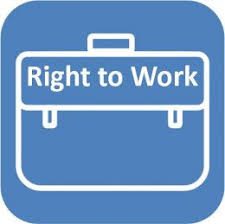In a bid to further ramp up the pressure on immigration, the Government has substantially increased the penalties for both employers and landlords who, mistakenly or otherwise, hire or rent properties to illegal migrants.
The Home Secretary, Suella Braverman, recently confirmed an amendment in the penalty charges which are both eye-watering and of real significance for employers who are found to have taken on an illegal worker. These will come in next year.
The fine for employers will be increased to £45,000 per illegal worker for the initial breach, a steep rise from the previous £15,000.
For repeat breaches, this amount will escalate further to £60,000, up from £20,000.
The Home Office has also announced forthcoming consultations aimed at strengthening the actions against licensed businesses that employ illegal workers.
The statistics from the past few years are sobering. Since 2018, nearly 5,000 civil penalties have been issued to employers amounting to over £88 million in fines. Landlords too faced over 320 penalties, though the effect is considerably lower, adding up to just £215,500.
The emphasis from the Minister for Immigration, Robert Jenrick, is clear: “There is no excuse for not conducting the appropriate checks, and those in breach will now face significantly tougher penalties.”
As was the case before this, every employer should undertake the necessary checks to ascertain the legitimacy of their hires.
The Government is clearly taking a stance, stating that this policy has a number of aims:
- Curbing illegal immigration: Illegal working opportunities and housing are significant attractions for migrants. This often becomes the premise used by people smugglers.
- Ensuring fair competition: Employing illegal workers undercuts legitimate employers, depriving genuine job seekers of work opportunities.
- Economic impact: Illegitimate hiring evades the tax system, negatively impacting the national economy.
Key Actions for Employers:
- Revisit Recruitment Procedures: Ensure that your recruitment and vetting processes are stringent, updated, and in line with the new regulations. Above all, make sure proper Right to Work checks are carried out on all new employees.
- Utilise the Home Office Online System: This check takes just five minutes and is available on the GOV.UK website.
- Educate your Hiring/HR Team: Ensure that the people who recruit within your organisation are aware of the recent changes, and they know how to correctly carry out the necessary checks, prior to the applicant starting employment. This is key, as it is not uncommon that Line Managers are solely interested in getting new people started as soon as possible, and believe that right to work checks are just a tick box administrative exercise done only when there is time. This is now far from the case.
- Regularly Audit Existing Employees: Regularly review and update the status of current employees to ensure compliance. It is easy for those with a time limited Right to Work to fall through the cracks. Although, the Government also announced in July, New Immigration Rules confirming that from September 2023, people with pre-settled status under the EU Settlement Scheme (EUSS) will automatically have their status extended by 2 years before it expires, if they have not already obtained settled status.
- Stay Updated: Keep abreast of upcoming consultations and changes in the law to ensure ongoing compliance, such as the July announcement, as the Immigration rules are being regularly updated.
- Seek Expertise: Seek advice from experts, and especially on the periodic reviews and audits to ensure that your business remains compliant.
A proper process for ensuring this happens with every new hire is crucial, the penalties are too large to ignore.
If you are in any doubt at all, give us a call. We are not immigration experts, so some questions may need to be referred to others, but our team is here to support you, ensuring that your recruitment process is both effective and compliant.
The guidance provided in this article is just that – guidance. Before taking any action, make sure that you know what you are doing, or call an expert for specific advice.











